
Lemongrass is one of my favorite ingredients. It seems impossible for anything to taste bad if there’s lemongrass in it. (I think this is also true of coconut milk.) It’s one of those pleasing and in no way offensive Asian flavors that you can easily serve to folks who want to try something exotic and different but aren’t ready for something like shrimp paste or fermented black beans. I especially love marinating meats with lemongrass and then grilling them up, whether DIY-style at the table, on a grill, or even at a campsite. When raw, I find that the lemongrass fragrance can be quite grassy sometimes and a bit overwhelming in large doses (like in tea), but when grilled, the flavor becomes more subdued and complex, with a smoky citrus undertone.
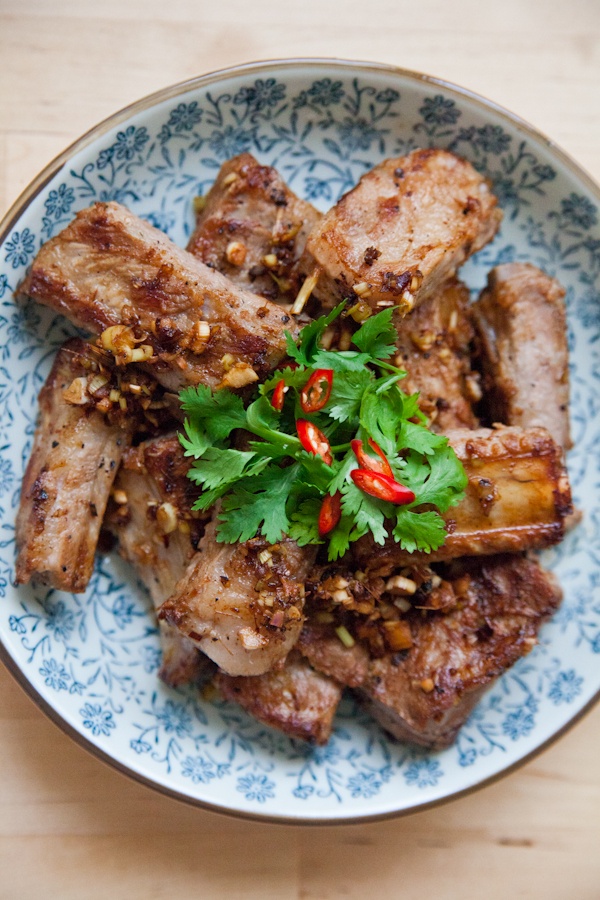
For simple, everyday meals, though, you don’t necessarily have to grill to get that great smoky lemongrass aroma. Stir-frying is an even easier way to achieve a similar flavor. These stir-fried lemongrass spare ribs showed up often at our dinner table when I was growing up. Only recently have I begun making this dish myself, and given how easy it is and how much we all love it, I really don’t know why it took me so long to incorporate it into our family meals. The marinade can work with other types of meats and cuts as well, if you wanted to do pork chops or pan-fried chicken thighs or drumsticks.
My favorite part, just as much now as when I was a kid, is the crispy charred bits of lemongrass and garlic. I added extra to this recipe just so I’d end up with more of it! Growing up, we’d mix it in with our rice to eat. Here, I had some leftover rice in the fridge (it’s actually a mixture of brown rice and lentils in the pictures, which is how we eat our rice these days), so I ended up just making fried rice straight in the pan after I took the ribs out, scraping up all the best browned bits with it.

Mom’s Stir-Fried Lemongrass Spare Ribs (SÆ°á»n Heo Sả)
Serves 2-4 as part of a larger meal
If you haven’t used lemongrass before, it can be a bit of an odd ingredient. It’s shaped like scallions or leeks, but texturally it’s much more like a stalk or a stem. Get the freshest you can find, and try to work with it soon after purchase, because once it’s dried out a bit it becomes very fibrous and tough to cut (this is less of an issue if you’re using it whole to flavor soups and curries). You can also buy chopped frozen lemongrass by the tub from the freezer case at many Asian grocery stores, which is a fine substitute.
To prepare the lemongrass, peel off the outer dry layers and cut off the dried section at the top of the stalk. Cut the stalk into smaller sections, bunch up the sections, and slice thinly crosswise. Then go over the thin slices a few times with your knife until you have a rough mince. The pieces don’t need to be too finely minced or else they will easily burn. Alternatively, you can chop in a food processor. Minced lemongrass freezes well, so you can chop up a large batch at a time and freeze in portions in an ice cube tray.
The lemon juice in this recipe supposedly helps the meat come off the bone more easily when you eat it, which is what my mom says she was told by her grandma. I don’t know how true that is, but in any case the acidity also balances out some of the flavors and is a nice addition.
1 lb pork spare ribs, cut into bite-sized pieces (usually my family buys it in about 1-inch pieces, which is about half the size of what’s pictured)
1 Tbsp lemon juice
1/2 tsp fine sea salt
1/4 tsp sugar
1/4 tsp pepper
2 cloves garlic, minced
4 Tbsp lemongrass, minced (about 2 stalks)
2-3 Tbsp cooking oil (canola, vegetable, or even coconut oil, which is what I used here)
1 Tbsp honey
a few dashes of Maggi seasoning sauce or soy sauce
1. Rinse the ribs and pat dry with paper towels. Add the lemon juice, salt, sugar, pepper, garlic, and lemongrass to the ribs and marinate at least 1 hour and up to overnight.
2. Heat a wok or a 12-inch skillet over medium-high heat. Add the oil. When the oil is hot, add the ribs, but try to leave out the extra stray bits of lemongrass and garlic for now (they burn easily, so we’ll add them afterward), only whatever bits are already clinging to the meat. Leave the ribs alone for a few minutes to let them brown, then stir them up and let them brown on all sides. Once the ribs are browned but not too dark, turn the heat to medium-low to let them cook through. Depending on how thick or how big the ribs are cut, you may want to cover them with a lid to make sure they cook through completely. Here, I had to cover them for about 5 minutes. When you lift the lid, if there’s liquid that’s accumulated from the steam, turn the heat back up to medium or medium-high, and cook until the liquid evaporates and the ribs have crisped up a bit, all the while stirring and watching carefully so that nothing burns. When the ribs are done, drizzle the honey over them and stir-fry for another half-minute or so to allow the honey to caramelize and coat the ribs. Remove the ribs to a plate.
3. Add the remaining bits of lemongrass and garlic from the original marinade to the pan (you can also add more oil here if the pan is too dry, to prevent the lemongrass and garlic from burning). You want the heat high enough for the lemongrass and garlic to crisp up here (if the lemongrass doesn’t crisp, it will be tough and fibrous), but not so high that they burn. Once the lemongrass and garlic are brown and crispy, add them to the ribs on the plate. As is customary in my family, add a couple dashes of Maggi over everything. Serve with rice. If desired, mix some of the charred bits of lemongrass and garlic in with your rice as you’re eating.
Optional: If you happen to have leftover cold rice in the fridge, you can make fried rice in the same pan. Take the cooked ribs out of the skillet but leave the bits of lemongrass and garlic. Add a bit more oil to the pan, then put the cold rice in (you can crumble the rice up a bit with your fingers before adding it in). Stir-fry a few minutes, then sprinkle some water over the rice and cover with a lid for a few minutes to warm it through. Only use leftover cold rice for fried rice — freshly made rice will turn into mush.
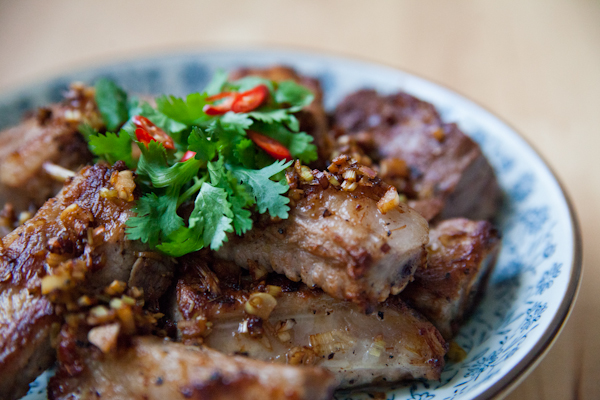



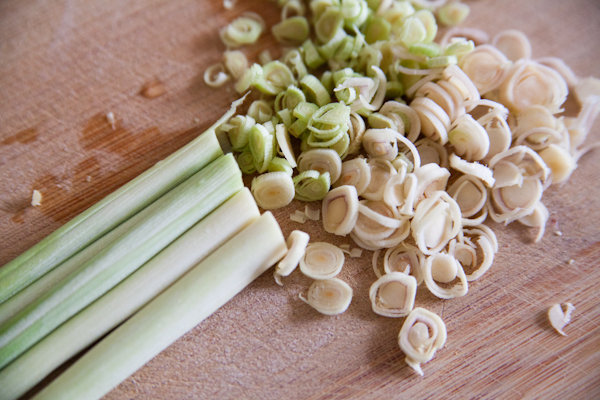
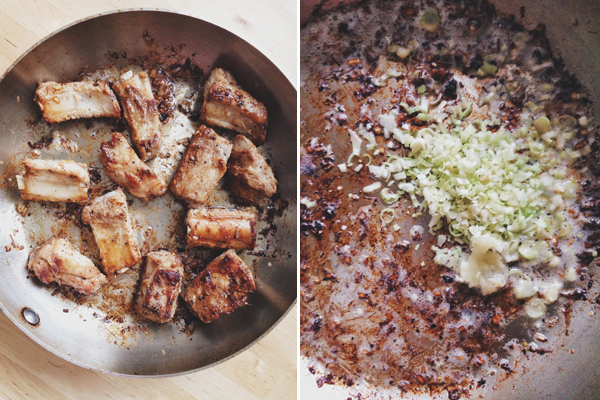

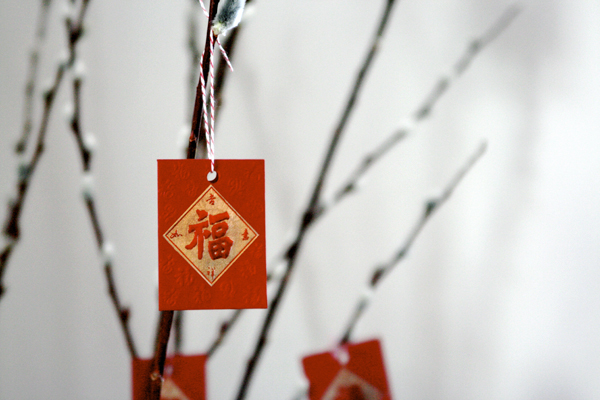
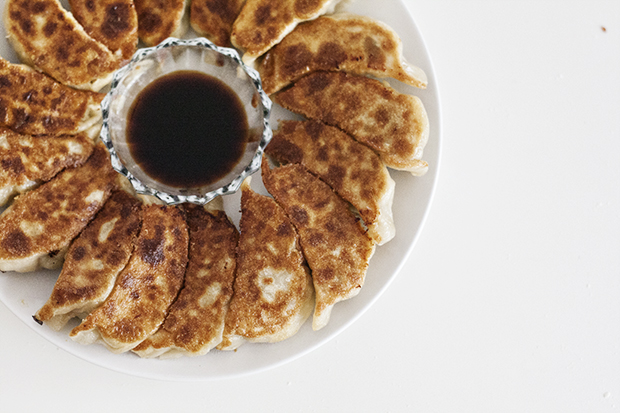
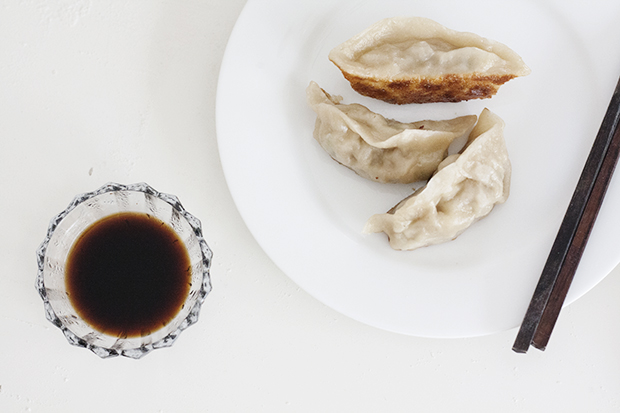

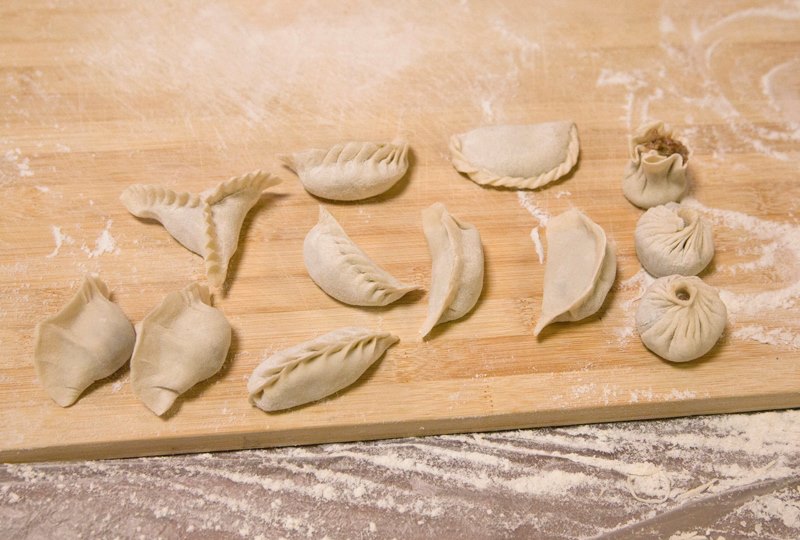
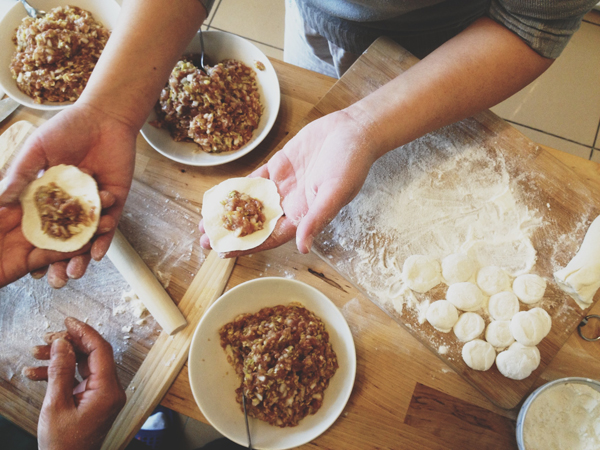
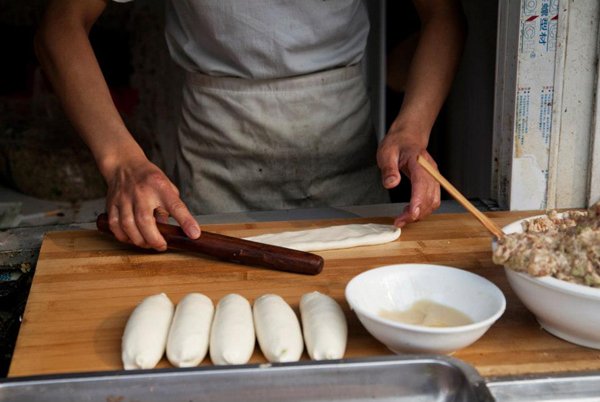
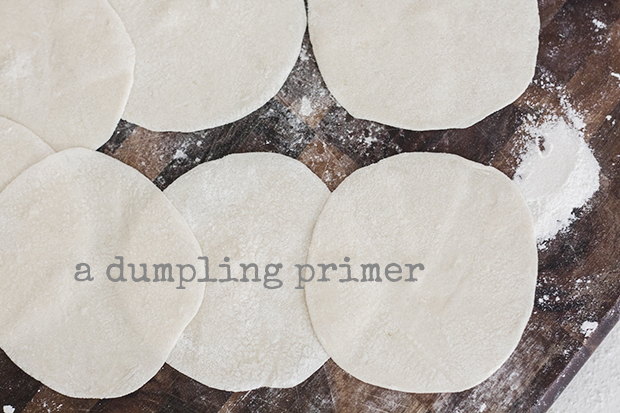
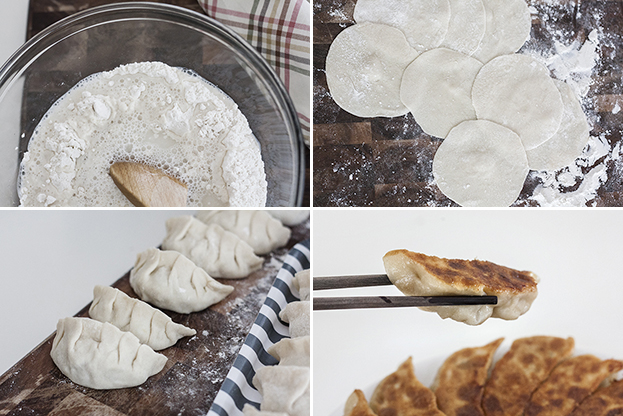
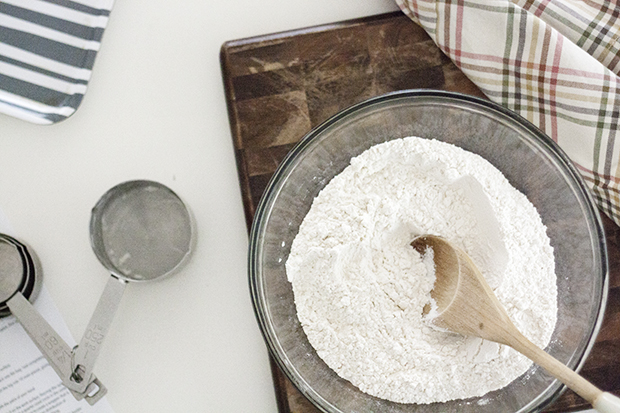
 1. Put the flour in a bowl and make a well in the center. Pour the water in and stir (either with your hand or with a spoon), evenly moistening the flour. Gently mix until all the lumpy bits have been incorporated. Add more flour or water as necessary. The dough should start looking shaggy and hold its shape when pinched, but it shouldn’t be too moist.
1. Put the flour in a bowl and make a well in the center. Pour the water in and stir (either with your hand or with a spoon), evenly moistening the flour. Gently mix until all the lumpy bits have been incorporated. Add more flour or water as necessary. The dough should start looking shaggy and hold its shape when pinched, but it shouldn’t be too moist.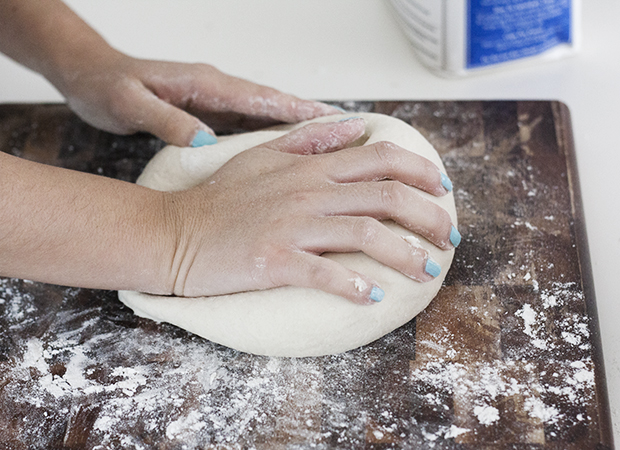
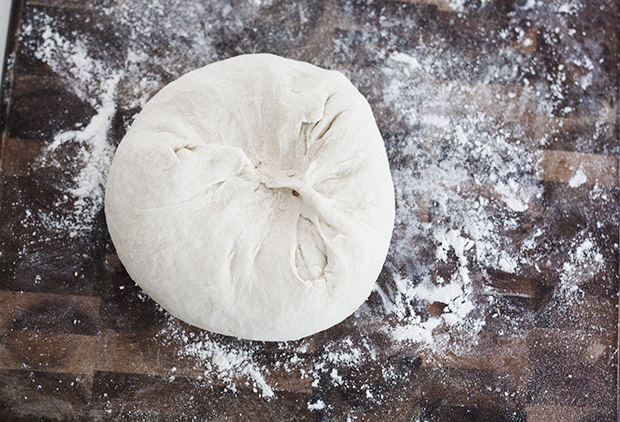 3. Smooth out the top of the dough and pinch the ends together on the bottom. Place the dough in a Ziplock bag and let it rest (alternatively, you can put it in a bowl and cover with a plate).
3. Smooth out the top of the dough and pinch the ends together on the bottom. Place the dough in a Ziplock bag and let it rest (alternatively, you can put it in a bowl and cover with a plate).
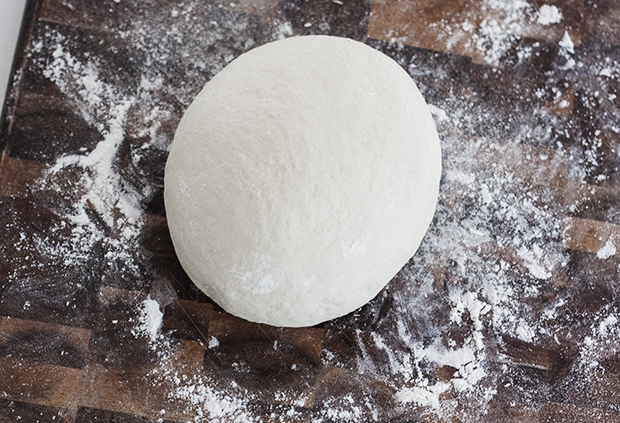
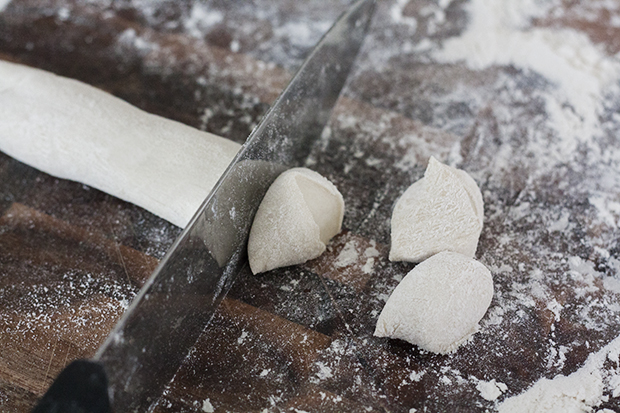
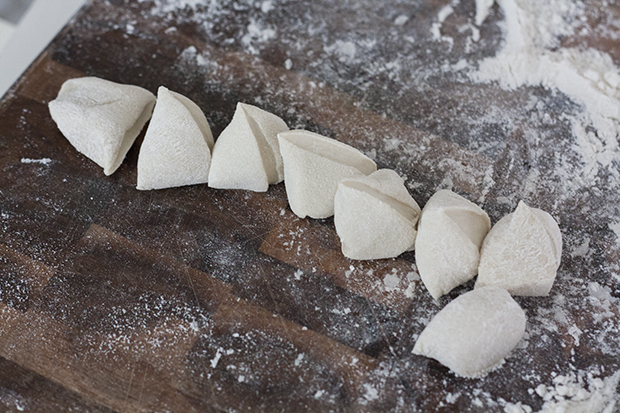 7. Roll the remaining third of the dough into a 1-inch thick log. Cut the log into even pieces, about 3/4 ” thick each. (If the ends of the log are thinner, make those cuts a bit longer, about 1″ thick.) Now here is the trick I learned in the dumpling class:Â After each cut, rotate the log a quarter turn, so that the dough pieces are pinched in different directions on each side (see photo above). As you’ll soon see, this is an important step in forming perfectly circular dumpling wrappers!
7. Roll the remaining third of the dough into a 1-inch thick log. Cut the log into even pieces, about 3/4 ” thick each. (If the ends of the log are thinner, make those cuts a bit longer, about 1″ thick.) Now here is the trick I learned in the dumpling class:Â After each cut, rotate the log a quarter turn, so that the dough pieces are pinched in different directions on each side (see photo above). As you’ll soon see, this is an important step in forming perfectly circular dumpling wrappers!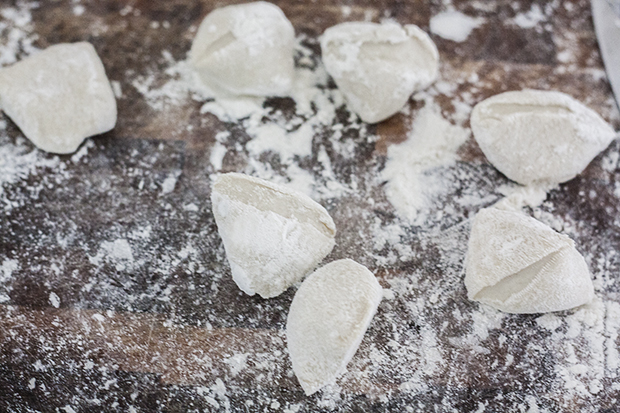
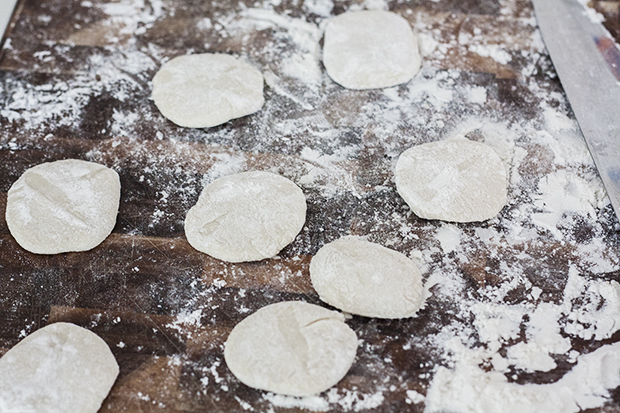
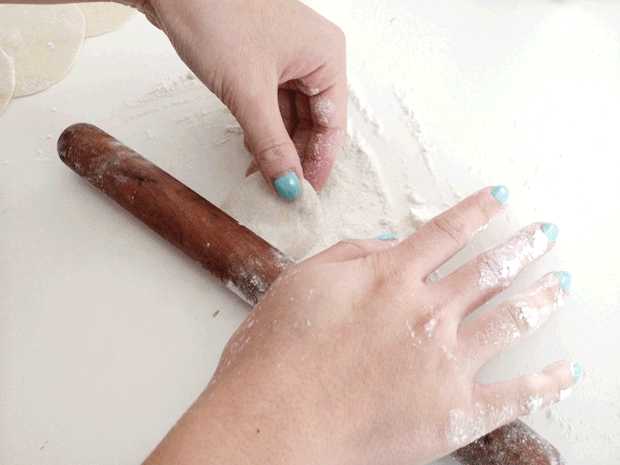
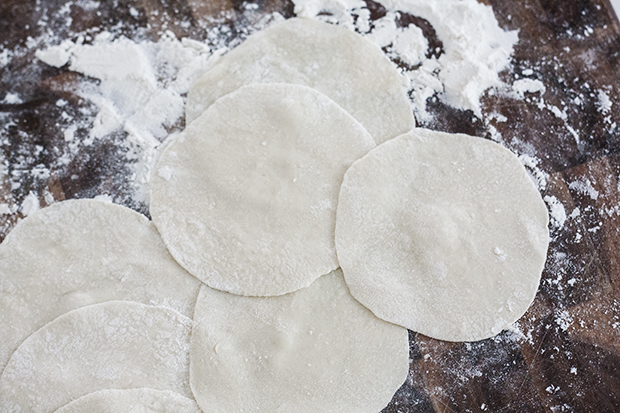
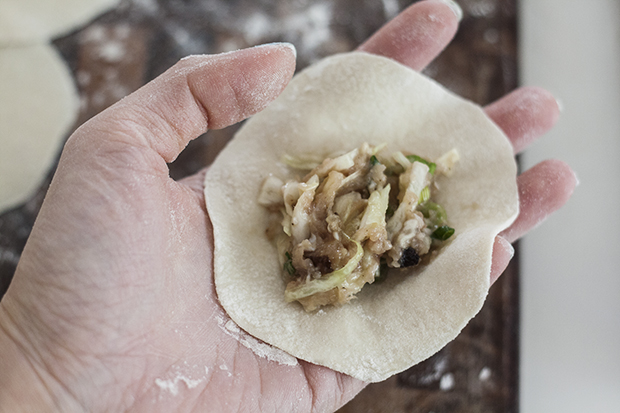
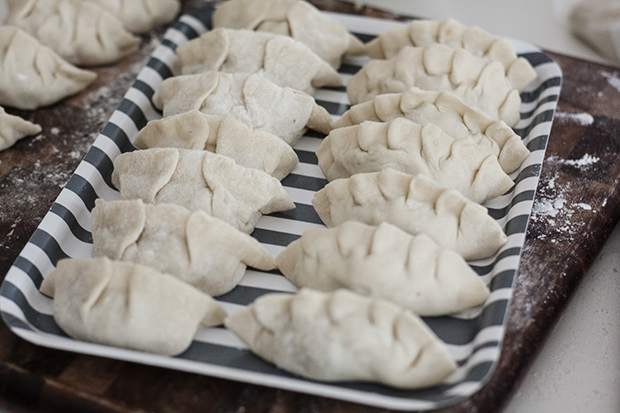
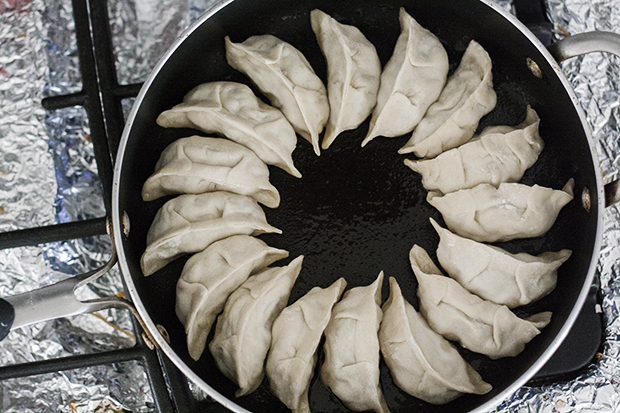 1. Heat up 1-2 tablespoons of vegetable oil in a non-stick pan on medium-high heat. When the pan is hot, add in the dumplings in a single layer. Arrange them in a circular shape, allowing them to hug one another. Leave about 1/8″ between each dumpling because they will plump up.
1. Heat up 1-2 tablespoons of vegetable oil in a non-stick pan on medium-high heat. When the pan is hot, add in the dumplings in a single layer. Arrange them in a circular shape, allowing them to hug one another. Leave about 1/8″ between each dumpling because they will plump up.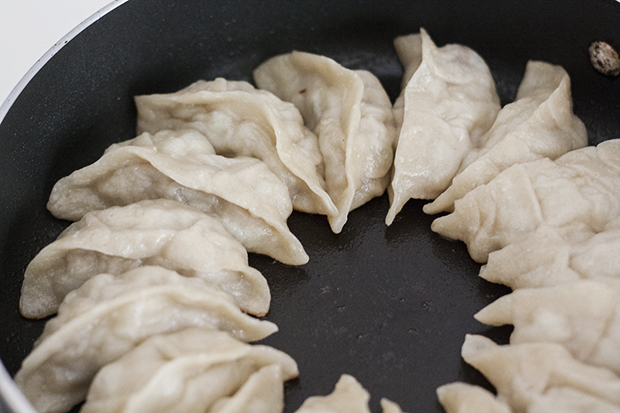
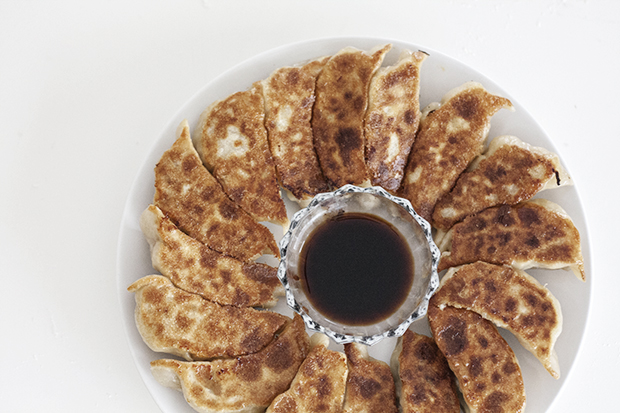
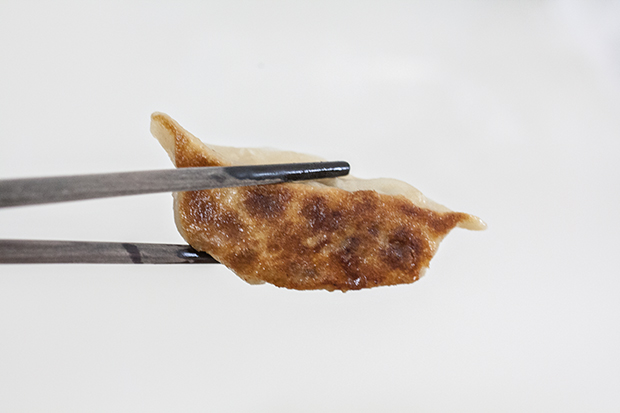
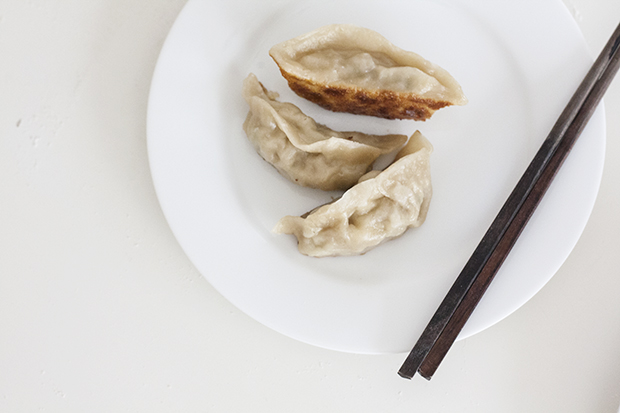
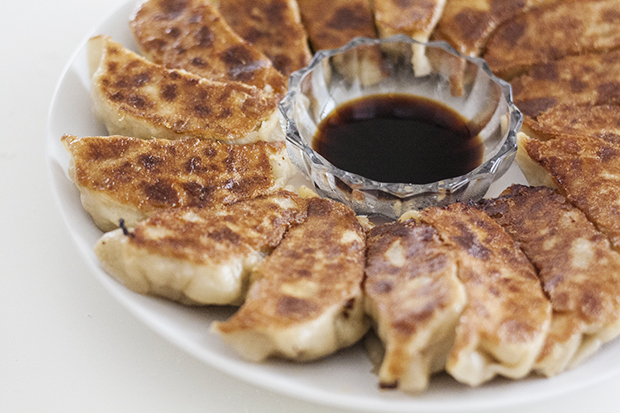
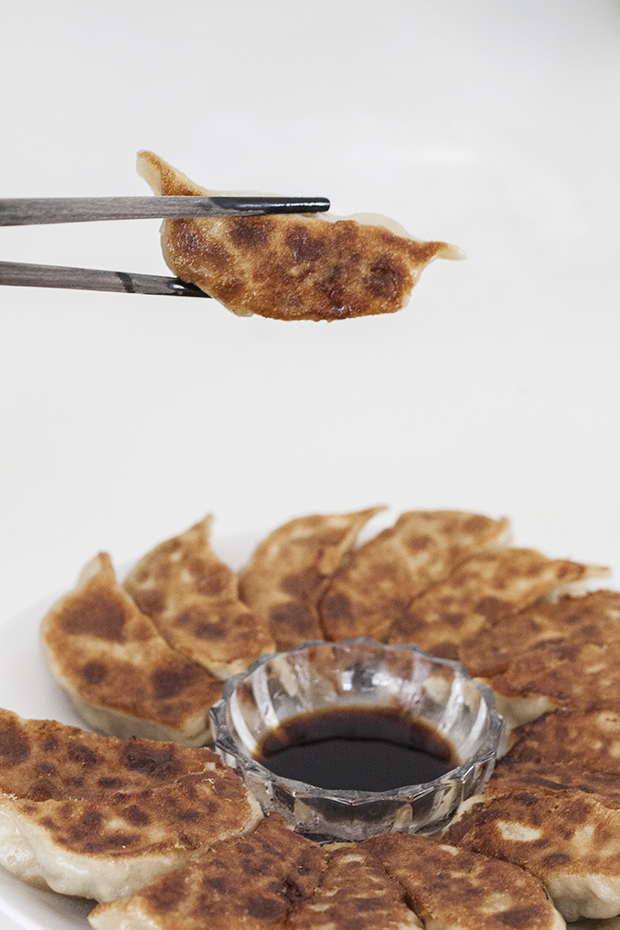
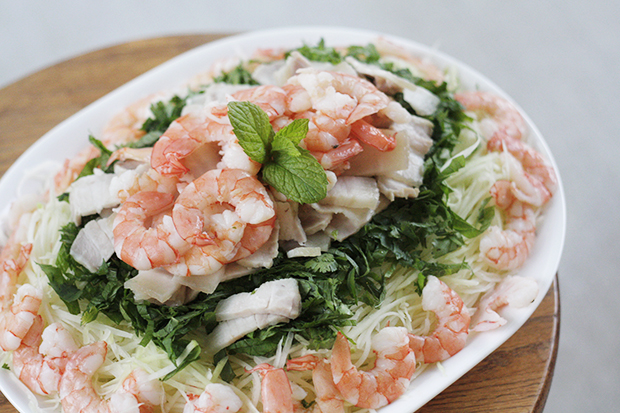

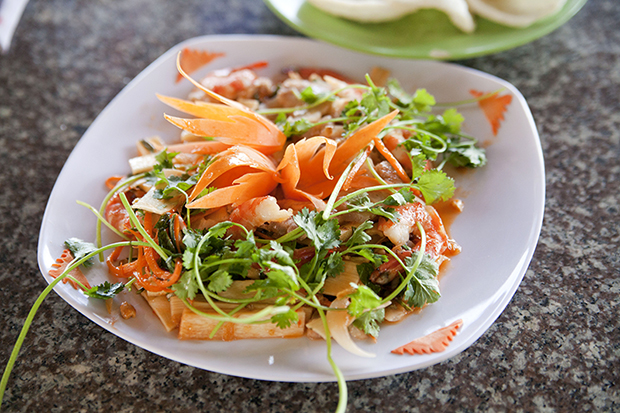
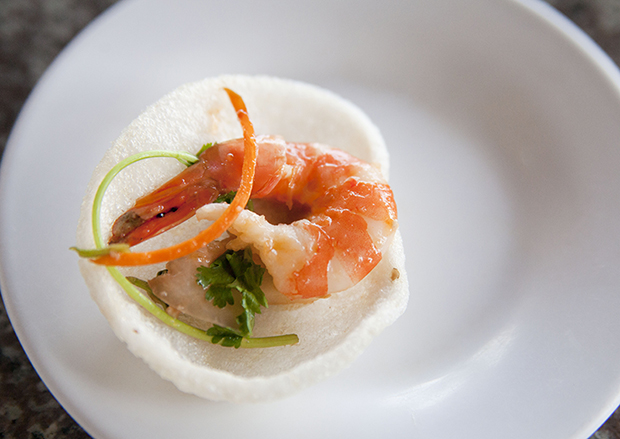
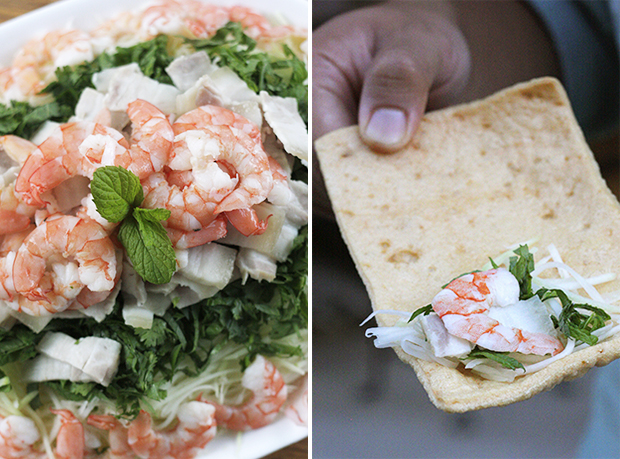
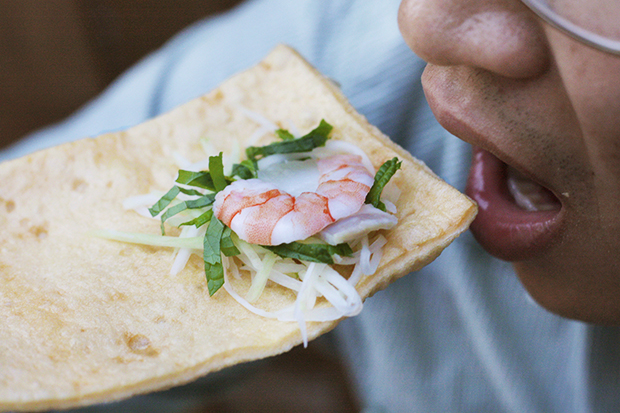


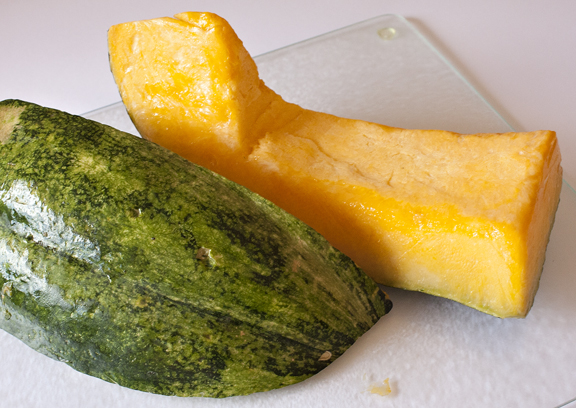

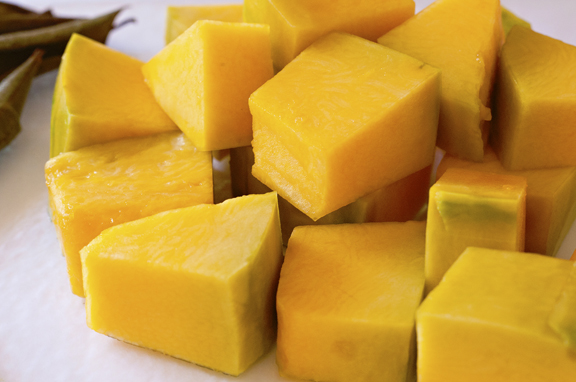
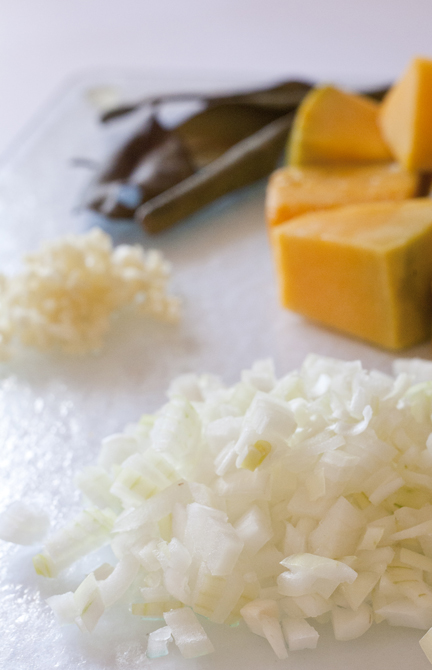
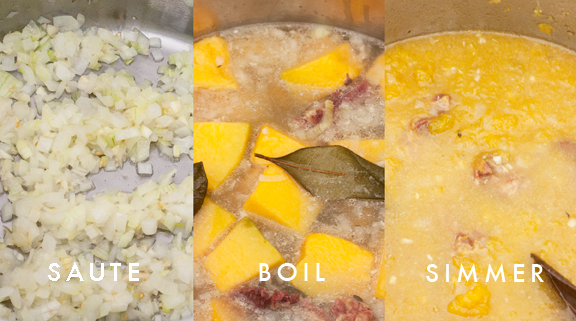










Connect with us